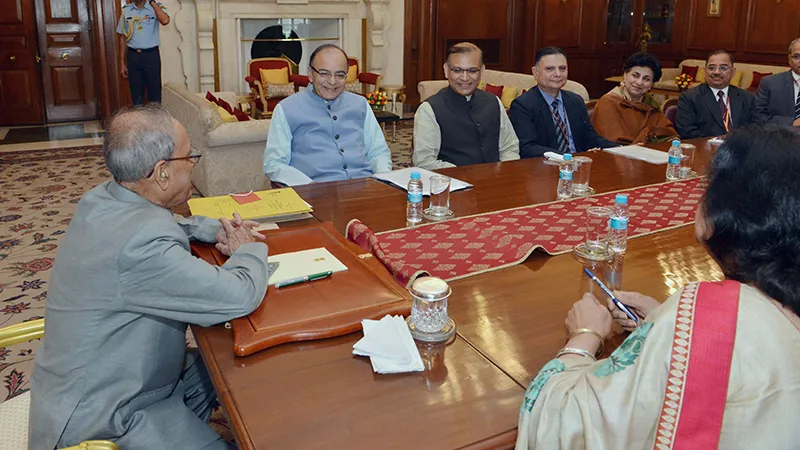-
CENTRES
Progammes & Centres
Location

The hype and euphoria surrounding the Union Budget 2016-17 was unprecedented and seen only in India even though the Budget is mostly a revenue and expenditure statement of the Government along with few policy directions annually. Given the unrest in the country, starting from the student agitations in JNU to the Jat agitation, it is only apt that the focus got shifted to the economy whose revival and growth would not only give a boost to manufacturing and job creation but also divert the attention of the population from the political milieu to the economic front. Moreover, the budget was an opportunity for the NDA Government to regain some of its lost ground on the reforms front. But the big question is whether the budget 2016-17 has delivered on growth and the infrastructure development?
The inadequacy of quality infrastructure at internationally competitive prices has long been recognised as a handicap to the development of the economy. Given the focus of the government on ’Make in India” to create mass manufacturing for job creation, it was imperative for the Budget to address issues that constrain the infrastructure sector and pursue reforms with more rigour. Broadly, the key measures announced in the Union Budget provide a renewed impetus to the investment cycle and infrastructure sector in the country. However, only time will tell whether the measures announced would be enough for the scale and speed of the development needed.
Six key infrastructure and core industries — electricity, crude oil, the petroleum refinery products, coal, steel and cement — have a weight of 26.7 per cent in the Index of Industrial Production. Some of the key measures related to infrastructure in the budget are as follows. The government has given equal emphasis to all physical infrastructure including roads, rails, ports and aviation infrastructure. The total allocation to Infrastructure in the budget 2016 now stands at Rs. 2,21,246 crore which is huge and much needed. Rs. 55,000 crore was allocated for roads and highways. Total allocation for road construction, including PMGSY now stands at Rs. 97,000 crore. The budget also pointed out that 65 eligible habitates would be connected via 2.23 lakh kms of road. The current construction pace is 100 kms per day. The finance minister also highlighted the fact that India’s highest ever production of motor vehicles was recorded in 2015. The port sector also got attention. The finance minister said that new Greenfield ports would be developed on east and west coasts. In the aviation sector, an action plan is proposed for revival of unserved and underserved airports in partnership with state governments. Also efforts will be made to revive small airports to improve regional connectivity. So overall there is required allocation and vision to develop infrastructure sector in this budget.
One of the key reasons why infrastructure development in the country has failed to take off in a big way is due to the dismal performance of the Public Private Partnerships which at one point of time were considered to be a panacea for all infrastructure challenges facing the country. They were scaled up to a large extent in the last decade presuming that they would transform India’s infrastructure landscape. A close scrutiny of the PPP projects in India reveal that they are beset with a plethora of problems. Undoubtedly, there are several examples of successful cases of PPPs in India but the numbers are few. The key reasons why PPPs have failed to take off in India in a big way include red-tapism, power struggle between different agencies including lack of trust between the government and the private operators, corruption, land acquisition issues and environmental clearances have gradually resulted in making the PPP an unviable business model in the Indian context. Hence, the government to reinstate some confidence in the private sector in this budget has introduced the public utility (resolution of disputes) bill which will issue guidelines for renegotiation of PPP concession agreements. Further, the budget has also announced the new credit rating system for infrastructure projects. Undoubtedly, the government needed to revisit the PPP model and take up projects on its own and then auction to the private players for efficient management to be able to re-instate some confidence into the private sector to take interest again.
Even the Kelkar committee report brought in November 2015 on revisiting and revitalising PPP model of Infrastructure has highlighted that the success of deploying PPP as an additional policy instrument for creating infrastructure in India will depend on the change in attitudes and mindsets of all the authorities including public agencies partnering the private sector, government departments supervising the PPPs, and auditing and legislative institutions providing oversight of the PPPs. The report further states that PPP reflects a paradigm shift involving the private sector. It means moving away from “transaction to relationship,” accommodating “give and take” between private and public sector partners, and finally accepting uncertainties and appropriate adjustments inherent in implementing long-time contracts. Given the market and technological uncertainties, the PPP management will take decisions based on incomplete information.
Given the current economic situation, the government has rightfully focused on infrastructure with a view to bringing back the economy on a high growth trajectory. There were no big reforms and no major policy turnarounds. It is a modest budget with focus on rural economy, irrigation, agriculture, food processing and infrastructure. However, the success of this year’s budget lies in its implementation. Overall, the infrastructure sector is the winner in this year’s budget as the allocation to the sector has gone up significantly over the last year. But this sector needs consolidation in policy framework starting from approval to implementation, an institutional mechanism for fair pricing and competition, and developing financial markets along with enhanced budgetary allocation for achieving India’s long term growth potential.
The views expressed above belong to the author(s). ORF research and analyses now available on Telegram! Click here to access our curated content — blogs, longforms and interviews.

Dr. Geethanjali Nataraj, Principal, International Trade Policy, Confederation of Indian Industry (CII), Lodhi Road, New Delhi ...
Read More +
Kangkanika Neog Programme Associate Council on Energy Environment and Water (CEEW)
Read More +